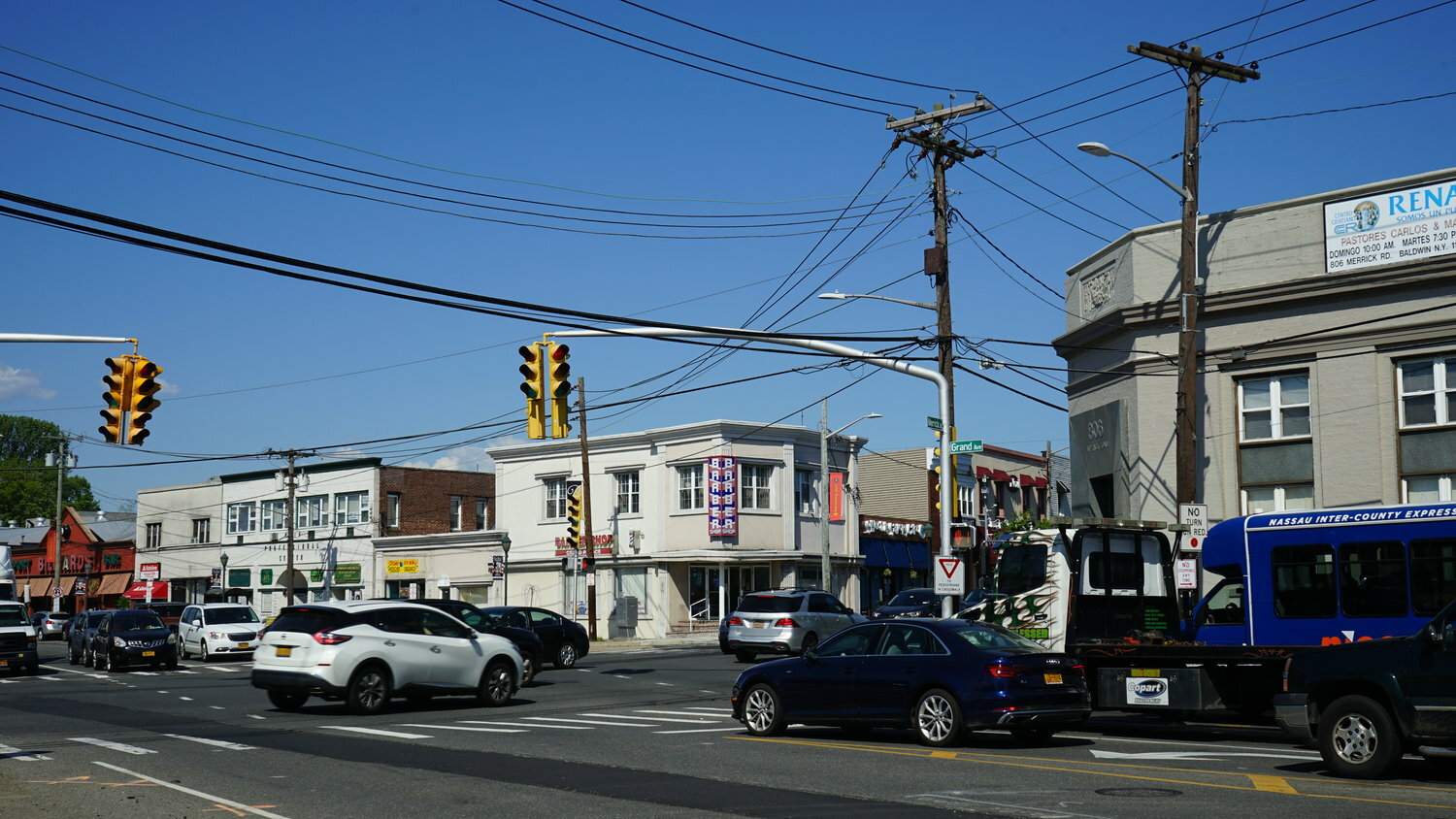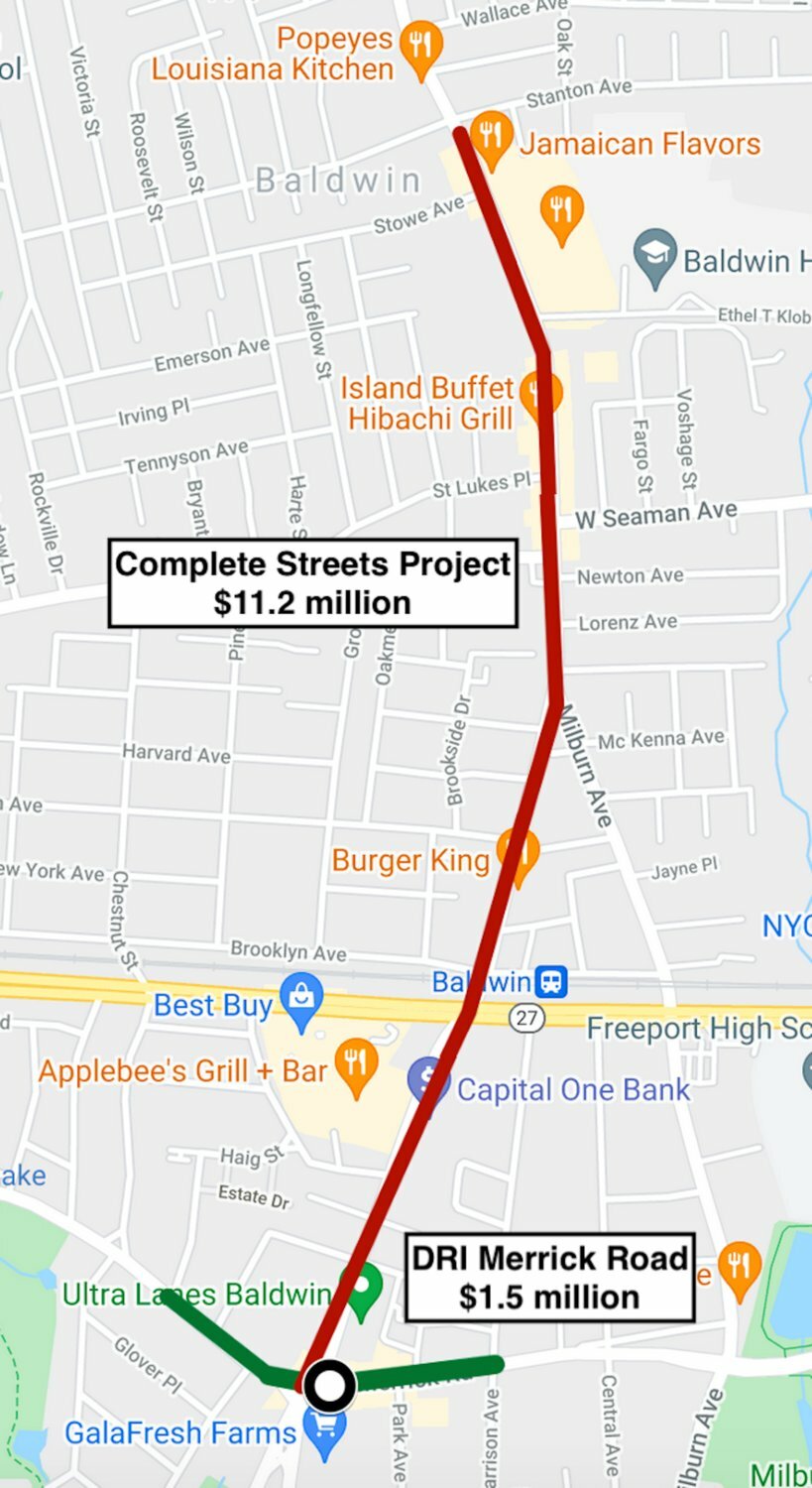Sunday, April 28, 2024
 50.0°,
Overcast
50.0°,
Overcast
Complete Streets Project on Grand Avenue enters final phase
The Complete Streets Project to revamp Grand Avenue in Baldwin — which has been plagued by delays since it began in 2017 — is just about finished, officials said.
The project addresses a 1.4-mile stretch of the Grand Avenue corridor, between Stanton Avenue and Merrick Road.
Some of the main changes to the roadway include reducing sections of it from four lanes to two, and adding a center left-turn lane; repaving the road; and reconfiguring the traffic signals.
Nassau County Legislator Debra Mulé said that the pandemic, and the sinkhole that opened up on the roadway in June, had delayed the reconstruction. However, Mulé said that the project was approaching the “tail end,” and should be completed by late fall or early winter.
The legislator met with contractors from the county Department of Public Works on Aug. 29 to see how far the project had progressed and to share some community members’ concerns about the work.
“I’m hoping that this project will be part of the Baldwin downtown renaissance,” Mulé said. More than half of the funding for it, she added, came from the federal government.
In 2013, the Legislature enacted a Complete Streets Law, which called for roads that serve the needs of not only private vehicles, but also pedestrians, bicyclists, public transportation users, older people, children, and those with disabilities.
The following year, the county public works department hired LiRo Engineers to conduct a traffic study of existing and future conditions, which was funded by the New York Metropolitan Transportation Council through the Unified Planning Work Program.
With input from public works officials, county and Town of Hempstead leaders, the Baldwin Civic Association and Chamber of Commerce, Vision Long Island, and Baldwin residents, the final report was released in June 2016.
The Legislature unanimously approved the project in April 2019, and it unanimously voted to include $8.46 million for the work in the county’s four-year capital plan, including $4.7 million in U.S. Department of Transportation Surface Transportation Earmarks.
Mulé said she hoped the rehabilitation of the road would encourage more businesses to open in Baldwin, and that she wanted Grand Avenue to be a better driving experience for motorists and a safer, less stressful one for pedestrians and bicyclists. Safety is a focal point of the project, as evidenced by plans to reduce the number of lanes, she said.
“So if you noticed, there have been curb bump-outs,” Mulé said. “So when the light turns, people can already be out at the end of the curb bump-out, and they don’t have to walk as far to get to the other side. So it makes it safer.”
The new traffic signals that are being installed will make traffic move more efficiently and make Grand Avenue safer, officials said. The signals, coupled with fewer traffic lanes, will help reduce travel times, according to Mulé. Engineers who have studied the project agree that traffic should move much better, she said.
“I am optimistic that it’s going to work,” Mulé said. “We shall see, but I’m very excited.”
Mulé took a tour with public works officials to check on areas of concern that community members have with the project. She said they have complained about water ponding in certain areas of the road. After speaking with officials, Mulé said that was occurring because the road hasn’t been paved yet.
“People noticed that some grass needs growing in certain areas,” she added. “But that’s old, and not even part of the project.”
HELP SUPPORT LOCAL JOURNALISM
The worldwide pandemic has threatened many of the businesses you rely on every day, but don’t let it take away your source for local news. Now more than ever, we need your help to ensure nothing but the best in hyperlocal community journalism comes straight to you. Consider supporting the Herald with a small donation. It can be a one-time, or a monthly contribution, to help ensure we’re here through this crisis. To donate or for more information, click here.
Sponsored content
Other items that may interest you









